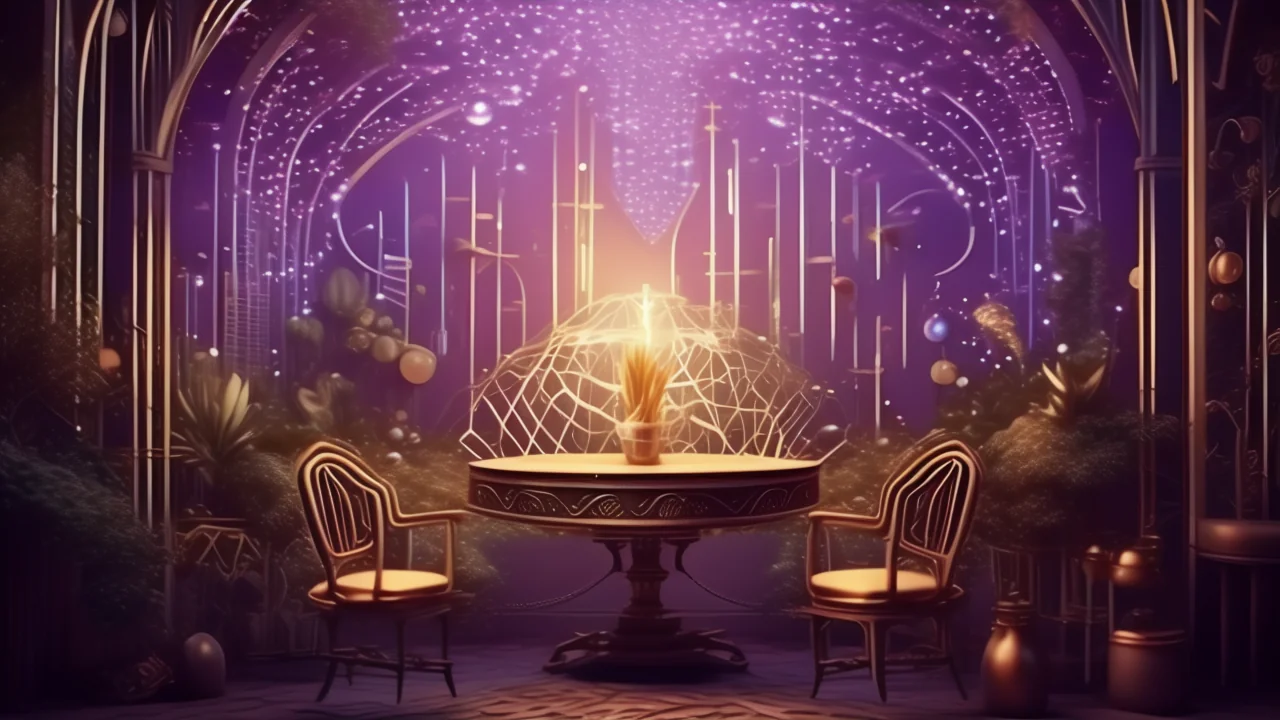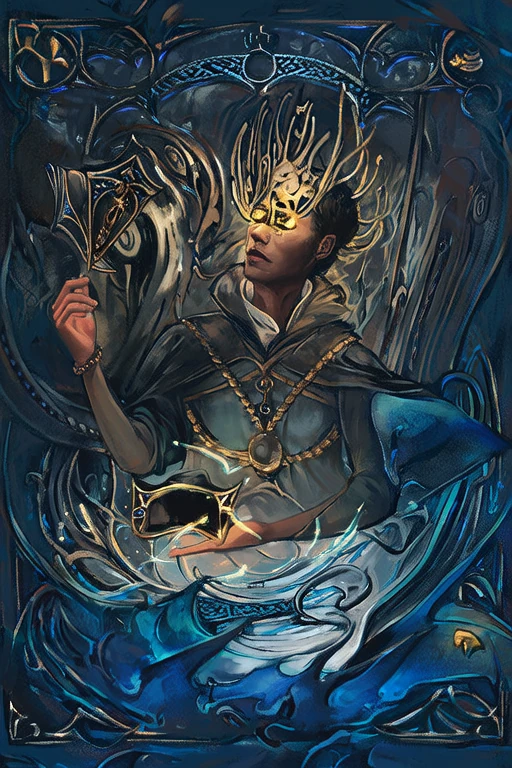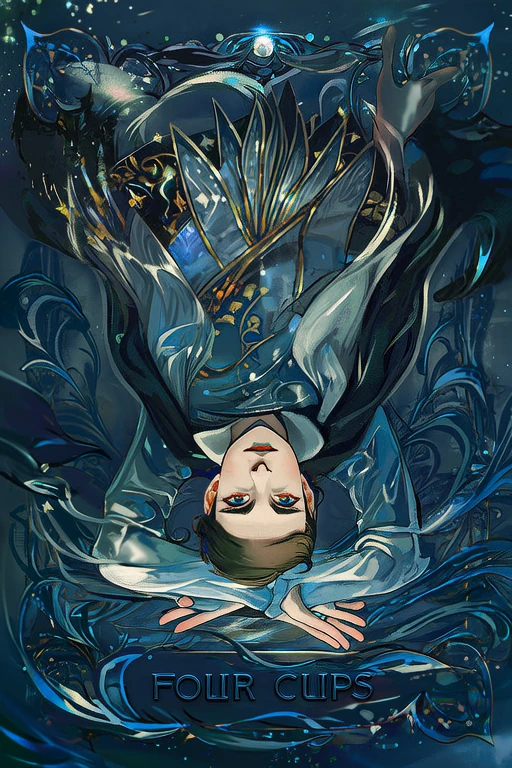
Five of Cups
Discover the deep meaning of Five of Cups with our free AI-powered tarot interpretation. Get instant, accurate readings based on advanced tarot knowledge.

Keywords
Upright Meaning
Loss, grief, self-pity
Reversed Meaning
Acceptance, moving on, finding peace
Full Interpretation
The Five of Cups represents loss, grief, and the need to process difficult emotions.
In-Depth Analysis
📜 Historical Background
The Five of Cups is one of the 56 minor arcana cards in the tarot deck, belonging to the suit of Cups, which traditionally represents emotions, relationships, and the element of water. Its origins trace back to early 15th-century Europe, particularly in Italy and France, where tarot was initially used for playing card games before evolving into a tool for divination and spiritual insight in the 18th and 19th centuries.
The imagery of the Five of Cups has remained relatively consistent since its appearance in early tarot decks like the Visconti-Sforza and Marseille decks. In the classic Marseille design, the card depicts a figure dressed in dark robes, holding two overturned cups while three others remain upright on the ground behind him. This visual motif suggests a sense of loss or disappointment, with the figure fixated on what has been spilled rather than what remains.
The symbolism of the Five of Cups may have roots in classical mythology or medieval allegory. Some scholars suggest connections to the Greek myth of Pandora’s box, where the release of troubles and sorrows overshadows the hope that remains. Others draw parallels to Christian iconography, particularly the idea of mourning or penance, where the figure represents someone grieving over past mistakes or failures.
As tarot evolved through the Hermetic and occult revival of the late 19th century, particularly under the influence of the Hermetic Order of the Golden Dawn and A.E. Waite’s Rider-Waite-Smith deck (1909), the interpretation of the Five of Cups became more psychological and introspective. In the Rider-Waite-Smith version, the figure is shown in profile, staring at two spilled cups while ignoring the two that remain full behind him and a distant bridge or castle symbolizing potential future reconciliation or emotional healing.
Cultural variations of the card exist in different tarot traditions. In some Eastern European decks, the emphasis may shift from mourning to caution, while in modern esoteric decks, the Five of Cups often incorporates themes of emotional stagnation, grief, or regret. The card has also found a place in Jungian psychology and modern therapeutic practices, where it is used to explore themes of emotional attachment and the process of letting go.
Overall, the Five of Cups reflects a universal human experience: the pain of loss and the challenge of moving forward. Its historical evolution mirrors the broader transformation of tarot from a game to a deeply symbolic system for understanding the human psyche and spiritual journey.
Symbolism & Imagery
The Five of Cups is rich in symbolic meaning, with each visual element offering insight into the emotional and psychological themes it represents. At its core, the card illustrates a moment of emotional loss, disappointment, or grief, often accompanied by a refusal or inability to see what remains positive in the situation.
In most traditional depictions, a solitary figure is shown with his back partially turned, holding two overturned cups while looking toward them with a sorrowful expression. Behind him, three full cups remain untouched on the ground. This imagery symbolizes the human tendency to dwell on what has been lost rather than appreciating what still remains. The spilled cups represent missed opportunities, broken relationships, or emotional pain that cannot be undone, while the upright cups signify overlooked blessings or potential sources of healing.
Color symbolism plays a significant role in the interpretation of this card. The dominant colors are often muted or dark tones—such as black, gray, and deep blue—representing sadness, depression, and emotional turmoil. In contrast, the untouched cups may be shown in brighter hues like red or gold, suggesting hope, renewal, or opportunities that are still available to the querent.
Numerologically, the number five in tarot is associated with instability, conflict, and change. It often represents challenges or upheavals that disrupt the status quo, prompting growth through adversity. In the context of the Cups suit, which governs emotions and relationships, the Five of Cups speaks to emotional upheaval and the need to process grief or disappointment.
Across different cultures, interpretations of the Five of Cups vary. In some European traditions, it is seen as a warning against emotional attachment to the past. In modern psychological readings, it often represents a need for emotional healing or the process of letting go. In contrast, some New Age interpretations focus on the possibility of transformation and the importance of recognizing remaining opportunities.
When the Five of Cups appears upright in a reading, it typically signifies emotional pain, regret, or disappointment. It may indicate a situation where the querent is focusing too much on what has gone wrong and neglecting the positive aspects that still exist. However, when reversed, the card often suggests a turning point—where the querent begins to accept their loss, start healing, or shift their focus toward what can still be salvaged or rebuilt.
The Five of Cups is also connected to other cards in the tarot deck. In the Major Arcana, it shares thematic similarities with The Tower, which represents sudden upheaval and the collapse of illusions, and The Moon, which reflects emotional confusion and the need to confront hidden fears. Among the minor arcana, it pairs well with the Three of Cups (celebration and friendship) and the Seven of Cups (illusion and confusion), offering a spectrum of emotional experiences from loss to hope and clarity.
Ultimately, the Five of Cups serves as a reminder that while grief and disappointment are natural parts of life, they should not prevent us from seeing the blessings that still remain. It encourages introspection, acceptance, and the courage to move forward despite emotional setbacks.
Psychological Insights
From a psychological perspective, the Five of Cups can be interpreted through the lens of Carl Jung’s theories on archetypes and the collective unconscious. The card embodies the archetype of the Mourner or the Lamenting Figure—an archetype that represents grief, loss, and the human struggle to process emotional pain. Jungian psychology emphasizes the importance of integrating shadow aspects of the self, and the Five of Cups often reflects a shadow state where the individual is fixated on past disappointments or failures, unable to see the opportunities or emotional resources that still remain.
In modern life, the Five of Cups serves as a powerful metaphor for emotional resilience and the process of healing. It often appears in readings when someone is going through a period of mourning—whether due to a lost relationship, a career setback, or personal disappointment. Psychologically, the card encourages the querent to acknowledge their feelings without becoming consumed by them. It suggests that while grief is a necessary part of the healing process, clinging too tightly to past pain can prevent personal growth and future happiness.
This card is especially relevant in decision-making contexts where emotional bias may cloud judgment. It serves as a reminder to assess situations with clarity and to avoid making choices based solely on regret or past failures. In therapeutic settings, the Five of Cups can be a valuable tool for exploring themes of emotional attachment, self-pity, and the need for closure. Counselors and therapists may use this card as a prompt for discussions about letting go, self-forgiveness, and redirecting focus toward what is still within the querent’s control.
For personal growth and self-awareness, the Five of Cups invites introspection and emotional honesty. It challenges individuals to confront their pain rather than suppress it, while also recognizing that healing is a gradual process. Those who resonate with this card may be in a transitional phase, learning to release old wounds and embrace new possibilities.
In modern spiritual practices, the Five of Cups is often associated with emotional detoxification and soul healing. Many practitioners use this card in meditation or journaling exercises to explore unresolved grief and to cultivate gratitude for what remains. It is also used in shadow work, a spiritual practice aimed at integrating unconscious aspects of the self, allowing for deeper self-understanding and emotional liberation.
Ultimately, the Five of Cups serves as a gentle yet powerful reminder that while loss is inevitable, it does not define our entire journey. It calls on us to acknowledge our pain, learn from it, and then turn our gaze toward the untouched cups—the blessings, relationships, and opportunities that still await us.
Correspondences
The Five of Cups is associated with the element of Water, aligning it with emotional depth, intuition, and the subconscious mind. In astrology, it corresponds to the planet Mercury in the sign of Scorpio, a combination that emphasizes intense emotions, deep psychological insight, and the ability to process grief and transformation. Mercury’s influence brings communication and intellect into the emotional landscape, suggesting the need to articulate feelings and seek clarity after a loss.
Gemstones and crystals that resonate with the energy of the Five of Cups include black tourmaline for grounding and emotional protection, rose quartz for healing the heart and fostering self-love, and amethyst for spiritual clarity and emotional balance. These stones can be used during meditation or carried as talismans to support emotional healing and inner peace.
Herbs and essential oils associated with this card include lavender for calming anxiety, rosemary for remembrance and emotional clarity, and chamomile for soothing emotional distress. Burning sage or incense such as myrrh or frankincense can also help in releasing emotional burdens and facilitating spiritual cleansing.
Seasonally, the Five of Cups resonates with the transition of autumn, a time of letting go, reflection, and preparation for inner renewal. It is also linked to the waning moon phase, which symbolizes release, introspection, and the shedding of what no longer serves us emotionally.
In terms of chakra alignment, the Five of Cups is closely connected to the Sacral Chakra (Svadhisthana), which governs emotions, creativity, and pleasure. Balancing this chakra can help restore emotional stability and rekindle joy after a period of sadness or disappointment.
Numerologically, the number five signifies change, instability, and the need for adaptation. In the context of the Five of Cups, this number highlights the emotional upheaval and the necessity of personal growth through emotional challenges. It encourages movement, transformation, and the courage to seek new emotional horizons beyond past disappointments.
❓ Frequently Asked Questions
### Common Questions About the Five of Cups in Divination
**1. What does the Five of Cups mean in a love reading?** In a love context, the Five of Cups often indicates emotional disappointment, unfulfilled expectations, or lingering pain from a past relationship. It may suggest that one or both partners are holding onto past hurts, preventing the relationship from moving forward. If reversed, it can signal the beginning of emotional healing and a willingness to rebuild trust.
**2. Can the Five of Cups predict financial loss?** While not primarily a financial card, the Five of Cups can indicate emotional distress related to money, such as feeling regret over a poor financial decision or mourning the loss of an opportunity. It encourages the querent to assess what can still be salvaged and to focus on future possibilities rather than dwelling on past mistakes.
**3. Is the Five of Cups always negative?** No, the Five of Cups is not inherently negative—it is a card of emotional processing and growth. While it often reflects sadness or disappointment, it also serves as a reminder that healing is possible and that not all is lost. The upright position invites reflection, while the reversed position suggests a shift toward acceptance and renewal.
**4. How should beginners interpret the Five of Cups?** Beginners often misinterpret this card as a permanent state of loss. However, it is more about the process of grieving and the importance of not allowing past pain to overshadow present blessings. Encourage new readers to look at surrounding cards to determine whether the focus is on emotional healing or moving forward.
**5. What spreads work best with the Five of Cups?** The Five of Cups is particularly effective in spreads that explore emotional themes, such as the Three-Card Past-Present-Future spread, the Celtic Cross, or the Relationship Spread. In therapeutic readings, a simple three-card layout focusing on the issue, the lesson, and the resolution can provide clarity.
**6. How does the Five of Cups interact with other cards?** When paired with The Tower, it may indicate a sudden emotional upheaval. With the Two of Cups, it could suggest a relationship that needs healing. The reversed Five of Cups combined with the Six of Cups may signal the return of a past love or emotional closure.
**7. What practical advice should be given when this card appears?** Encourage the querent to acknowledge their feelings without becoming consumed by them. Suggest journaling, therapy, or meditation to process emotions. Remind them that while loss is painful, it often makes space for new beginnings. Focus on what remains rather than what has been lost.



